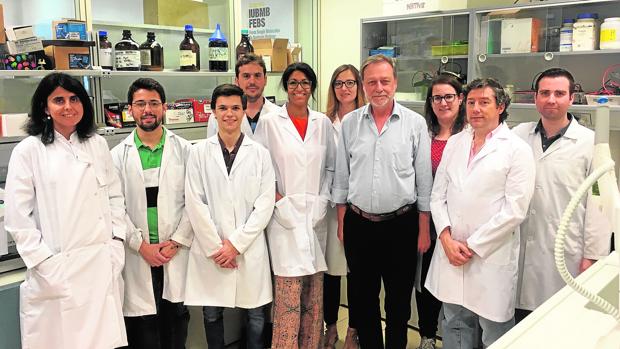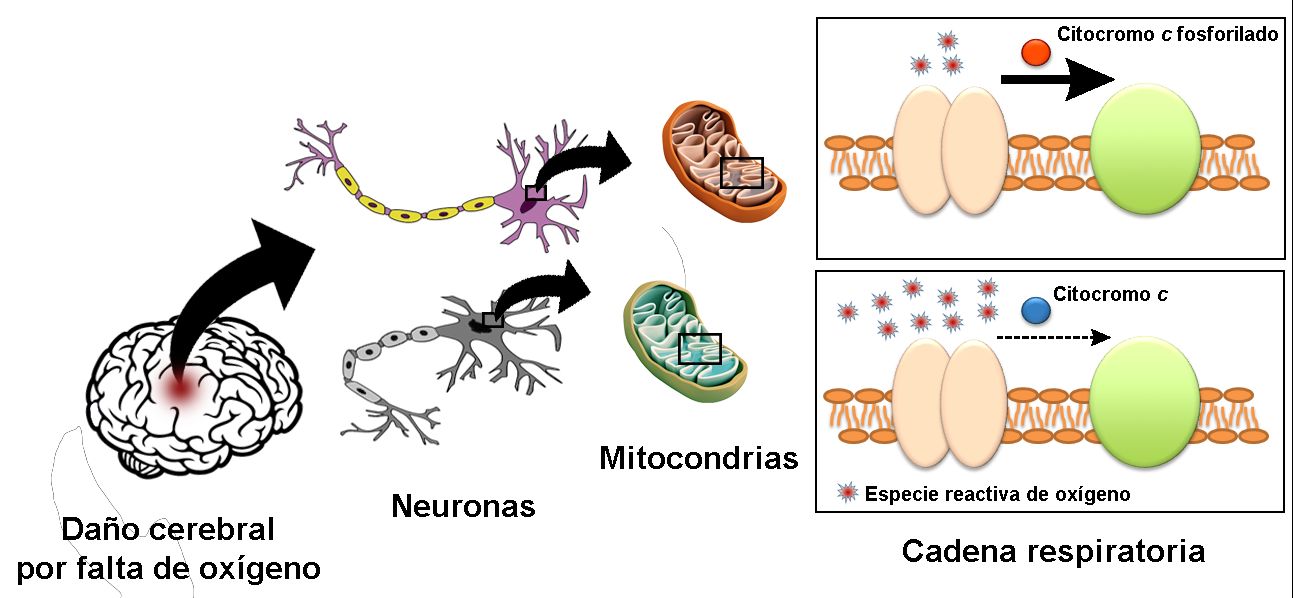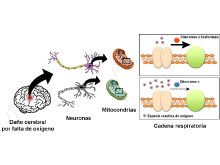English:Source: Ismael Gaona
A team of researchers led by Irene Díaz Moreno and Miguel Ángel de la Rosa, professors at the University of Seville at the Isla de la Cartuja Scientific Research Center (CicCartuja), has published a study in the official journal of the National Academy of Sciences of the United States, one of the most prestigious scientific journals in the world, about the molecular bases of the response of brain cells to a lack of oxygen.
In this report, the scientists reveal the molecular bases of the mitochondrial response to acute hypoxia or cellular stress derived from a lack of oxygen, in the context of certain diseases such as cerebral ischemia, since the correct functioning of mitochondria, both to produce energy and to eliminate reactive oxygen species, is essential for cellular balance.
Any alteration in their metabolism can lead to neurodegenerative diseases, cardiovascular pathologies and various types of cancer. These conditions have a common denominator: cellular stress associated with a lack of oxygen (hypoxia), which results in the inability to “burn” fuel in the mitochondria.
In their study, these researchers conclude that the decrease in post-ischemia neuronal death is due to substantial changes in mitochondrial metabolism, including greater efficiency of the respiratory chain, lower production of reactive oxygen species, and lower capacity to activate programmed cell death, a “suicide process” that cells enter when they receive a specific stimulus in order to make their cellular components available to neighboring cells.
In parallel, this study argues that the cytochrome C protein, as a “key modulator of energy metabolism“, can act as a neuroprotective agent when phosphorylated, which lays the foundation for testing the eventual use of phosphomimetic species, which chemically simulate natural phosphorylation, with the aforementioned protein when dealing with pathologies induced by acute hypoxia, such as cerebral ischemia and certain types of cancer.
For a better understanding
These findings allow a better understanding of mitochondrial metabolism at a molecular level and lay the foundation for testing the eventual use of cytochrome C phosphomimetic species in more efficient therapies against pathologies induced by lack of oxygen. The scientists in charge of the study belong to the Biointeractomics group, attached to the Institute of Chemical Research, a joint center of the University of Seville and the CSIC at the Cartuja Scientific Research Center (cicCartuja).
More information:
Alejandra Guerra-Castellano, Antonio Díaz-Quintana, Gonzalo Pérez-Mejías, Carlos A. Elena-Real, Katiuska González-Arzola, Sofía M. García-Mauriño, Miguel A. De la Rosa, and Irene Díaz-Moreno. Oxidative stress is tightly regulated by cytochrome c phosphorylation and respirasome factors in mitochondria. PNAS July 17, 2018. 201806833; published ahead of print July 17, 2018. https://doi.org/10.1073/pnas.1806833115





